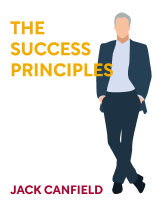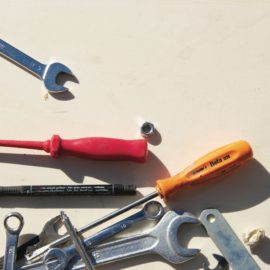

This article is an excerpt from the Shortform book guide to "The Success Principles" by Jack Canfield. Shortform has the world's best summaries and analyses of books you should be reading.
Like this article? Sign up for a free trial here .
Would you say you are a responsible spender? Do you tend to live above, below, or just in line with your means? How can you get better at conscious spending?
It’s common to think that being successful means living a lavish lifestyle and not having to think about what you spend money on. Though living the lifestyle you want while investing and growing your wealth is an admirable goal, it’s still important to learn how to consciously spend money.
Keep reading for tips on developing a conscious spending mindset.
What Is Conscious Spending?
Conscious spending means two things:
- You spend only the money you have. You earn more than you spend, and don’t take on debt to buy what you want.
- You do what you want while spending little. You devise creative ways to do things that don’t require spending a fortune.
On the whole, conscious spending will allow you to get what you need without having to go into debt or spend much to get it.
Tip #1: Pay in Cash
To encourage yourself to spend only on what you need, pay in cash for most things. Counting the amount of cash you spend on a given purchase and seeing what you have leftover makes you more aware of the money leaving your possession than when you use a card. You may find that purchases you deemed essential feel less so. It’s also harder to make large purchases because you can’t use credit and may have to save up for them.
Tip #2: Pay Less Than Full Price
Another way to buy expensive things is to buy them for less. Here are five ways to do it:
- Buy used. You can often find barely used, second-hand items for a fraction of their normal price. For example, Canfield knows a woman who buys all of her designer clothes from a consignment store.
- Buy on sale. Many companies do seasonal sales, offering significant discounts on their wares. For example, Canfield knows someone who likes buying vintage Cadillac convertibles, but he makes sure to buy them in the winter when they’re usually steeply discounted—most people aren’t thinking about buying a convertible in cold weather.
- Ask for a discount. Though it may feel uncomfortable to ask for a lower price, the worst the seller could do is say no. Since it could save you money, it’s worth a try.
- Do your research. Use the Internet or call different stores that offer the same item to find the best price.
- Trade. Instead of paying for something in cash, ask the seller if they’d accept another good or service as payment. For example, in exchange for your neighbor repairing your car, you could give them a home-cooked meal instead of cash.
Tip #3: Carefully Consider Student Loans
U.S. residents have more student loan debt than credit card debt. This is in part because it’s fairly easy to get an education loan. This may allow universities to justify increasing tuition and fees because they figure students and their families will have no problem paying. Instead of resigning yourself to taking on massive debt to attend college, strive to take on as little debt as possible using one or more of these methods:
- Seek scholarships. Scholarships are gifts and don’t have to be paid back. To make yourself more competitive, consider doing internships or becoming involved in affinity or industry groups that offer scholarships.
- Go to a community college for the first two years. Tuition at community colleges is often cheaper than at other universities.
- Live at home. Living at home can save you thousands of dollars on room and board. In general, always aim for the cheapest living situation. For example, it’s possible living in the dorms may be cheaper than living off-campus because you don’t have to pay to furnish the place yourself.
Tip #4: Pay Off Your Debts
When you have debt, you have to pay a portion of your earnings toward it each month instead of putting this money toward things you care about in the present. To free up your money for things you want to buy in the present, pay off your debts. Here are some tips:
1. Don’t borrow money. It’s hard enough to get out of debt, let alone if you continue to take on additional debts. The solution is to spend only the money you have—no credit cards, no payment plans.
For example, if you’re considering taking a $10,000 loan with 10 percent interest to purchase a car, and you have 60 months to pay it off, you’ll end up paying an extra $3,346.67. If you can’t stomach the idea of paying $13,346 instead of $10,000, consider buying a car for less money, or decide whether you really need it.
Also, don’t take a home equity line of credit to pay off your credit card debt. Though this allows you to bundle your debts and get a lower interest rate, it means effectively starting your payments over from the beginning—where you pay more toward interest than principal. If you’ve been paying certain debts for a while, you may already be paying more toward the principal than interest, making it worth it to stay the course and pay it off.
2. Start with the smallest debt and work up. Even paying off a small debt can give you the motivation to pay off more: You can now direct the money you had to put toward that small loan toward your larger debt instead. For example, once you pay off $5,000 in credit card debt, you can put the money you were paying toward that toward your $17,000 in student loans.
3. Pay off your debts early. If you don’t work to spend more than the minimum payment on your mortgage or credit card, you can end up paying thousands of dollars more over the life of the loan. To avoid this, pay more than you owe each month. When buying a home, look for a lender who offers bimonthly payments, meaning you pay half of your monthly mortgage twice per month. These loans reamortize with each payment, shaving seven years off of a 30-year mortgage. If you can’t find a lender who offers this, pay a bit more toward your mortgage each month, or make one extra mortgage payment per year. This works for credit cards, too.
Take Action: Curb Your Spending
To assess your spending habits, try these two activities:
- Inventory all the stuff you’ve bought but haven’t used in the past year. Estimate how much money you spent on all of it. It could be anything, from clothing to tools to games and toys. It’s one thing to use the things you buy, but if you’re not using them, consider whether you needed to buy them at all.
- Assess your small expenses. Make a list of all of the things you regularly spend money on and assess whether you could direct this money toward something that suits you better. For example, if you spend $0.50 a day for a newspaper subscription you never read, that adds up $182.50 per year. Consider whether that money could be better spent on something that brings you more happiness, like a plane ticket home for the holidays. If you cut down on small expenses, you could save a lot of money in the long run.

———End of Preview———
Like what you just read? Read the rest of the world's best book summary and analysis of Jack Canfield's "The Success Principles" at Shortform .
Here's what you'll find in our full The Success Principles summary :
- The 67 principles to help anyone achieve their goals and dreams
- Why achieving your goals requires you to invest your time and effort
- How to take responsibility for your own life






